The birth of every German medium tank was long and painful. This also applied to the Panther. One of the most numerous German tanks, it took almost 5 years to grow from a 20 ton tank to a 45 ton one. The tank changed radically during this time, and the T-34 had a significant impact on its design. Let's dive into how the replacement for the Pz.Kpfw.III was developed.
Battle against torsion bars
The second half of the 1930s was a difficult time for German tank building, especially when it came to medium tanks. The Begleitwagen (B.W.) tank initially developed by Rheinmetall was far from what the customer expected. The military got lucky: Krupp didn't just develop the tank's turret, but a whole new tank to go with it. This was accepted into service as the Pz.Kpfw.IV. Krupp's tank was the only one that met the weight requirement. The issue was that the Pz.Kpfw.IV was a second fiddle to the main medium tank, the Zugführerwagen (Z.W.). Formally, Daimler-Benz won the tender for this project, but their design was very unrefined in practice.
The first four variants were essentially test beds to find a working suspension. The first truly mass produced series was supposed to be the Z.W.38, which was developed with the help of Heinrich Kniepkamp, a key specialist on tracked chassis in the 6th Department of the Armaments Directorate. His chassis had a torsion bar suspension, 6 medium sized road wheels per side, a 12 L Maybach HL 120 TR engine, and a 10-speed Maybach Variorex 328 145 semi-automatic gearbox.
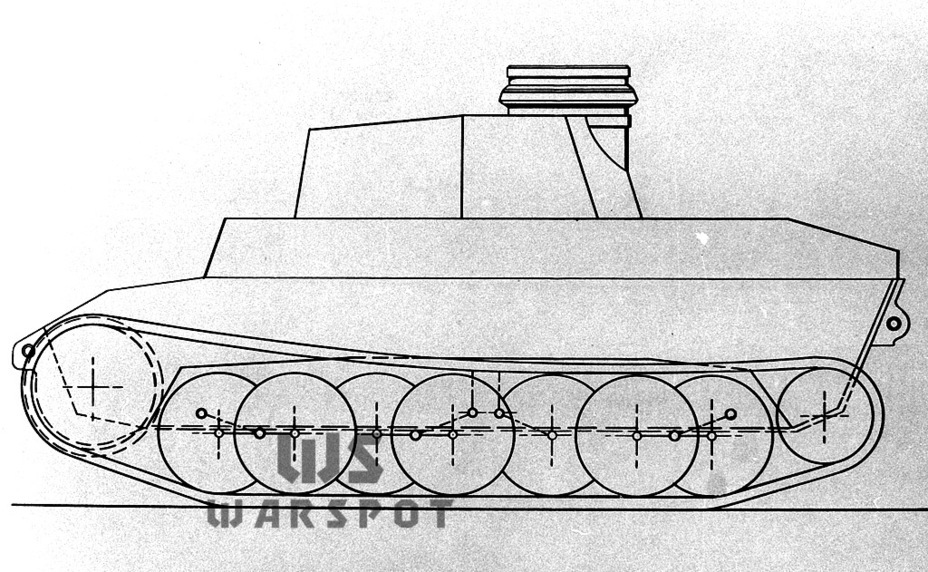
The Z.W.38 was put into production as the Pz.Kpfw.III Ausf.E, but both trials and production dragged on. The tracks had to be replaced, as the idea of track links with rubber pads proved poor. There were also many complaints regarding the gearbox. The tank was put into service anyway, but the result was a tidal wave of complaints in the fall of 1939 about gearbox failures and rapid wear of road wheel rims. The tank had to be redesigned yet again. The Pz.Kpfw.III Ausf.H with an SSG 77 gearbox, put into production in 1940, had a top speed of 40 kph. Meanwhile Daimler-Benz began working on two parallel projects in 1938. The first was the Z.W.40, which had a new engine and new running gear with enlarged diameter road wheels.
The second and more interesting vehicle was indexed VK 20.01 (III). This was a replacement for the Pz.Kpfw.III that was not created from scratch, but was also radically different from the tank. The first tank in the 20 ton weight class was ready on December 14th, 1938. The tank was supposed to use a 11.6 L 300 hp Maybach HL 116 engine and a torsion bar suspension with interleaved road wheels.
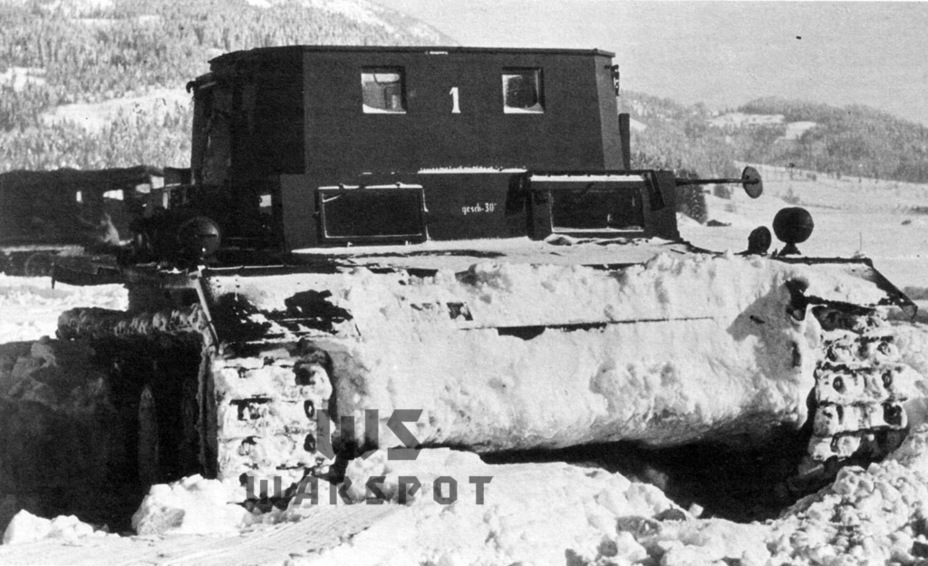
As with the Z.W.38, work on the VK 20.01 (III) was supervised by the 6th Department and personally by Kniepkamp. However, Daimler-Benz engineers had many issues with Kniepkamp and his ideas, many of which ended poorly. Their patience ran dry in September of 1939 when the Z.W.38 were breaking down en masse on the front lines. Like Krupp, Daimler-Benz had their influential patrons. In October the company received permission from the Mechanization Development Standardization Commission to develop their own tank independently. This was a serious slight against Kniepkamp that he never forgave. The new tank received the name GBK (Kampfwagen des Generalbevollmächtigten). The concept was ready by November 15th, 1938. It kept the interleaved 680 mm road wheels, but instead of a torsion bar suspension Daimler-Benz elected to use leaf springs. A planetary Wilson gearbox, similar to the one on the Pz.Kpfw.38(t), was used instead of a Maybach Variorex. The SSG 77 was considered as a backup option. The engine was another deviation from tradition: the tank used a 350 hp 17 L Daimler-Benz MB 809.
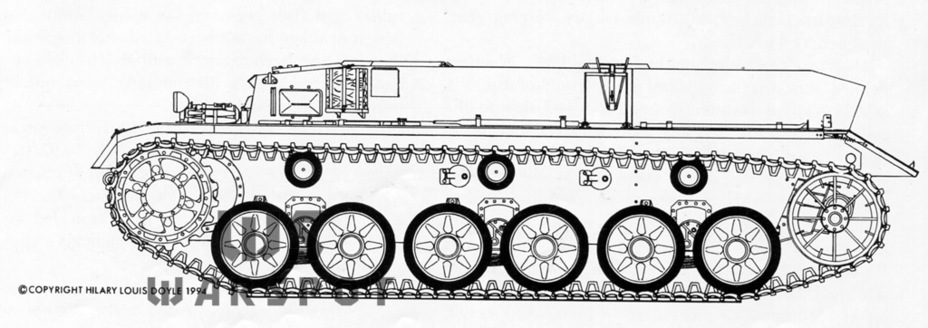
While Daimler-Benz worked on their tank, which later changed its name to VK 20.01(D), the 6th Department began working on a replacement for the Pz.Kpfw.IV. It was called VK 20.01 (IV). From a technical standpoint, the tank was supposed to overlap with the VK 20.01 (III). The work was assigned to Krupp in September of 1939, but the conglomerate quickly deviated from Kniepkamp's directions. The torsion bar suspension with interleaved road wheels had to be abandoned, as the tank turned out to be too wide. Instead, Krupp proposed their own idea: 6 road wheels 630 mm in diameter per side with a Pz.Kpfw.IV style suspension. A similar solution was later put into practice on the Pz.Sfl.IVb. 400 mm wide track links would be used. The project's name changed to VK 20.01 (BW) in November of 1939 and to BW.40 in December. That is when both Krupp and Daimler-Benz increased the armour of their tanks to 50 mm. Three experimental chassis were planned, but in May of 1940 the BW.40 project was closed due to the difficult situation on the front lines. The war with France began.
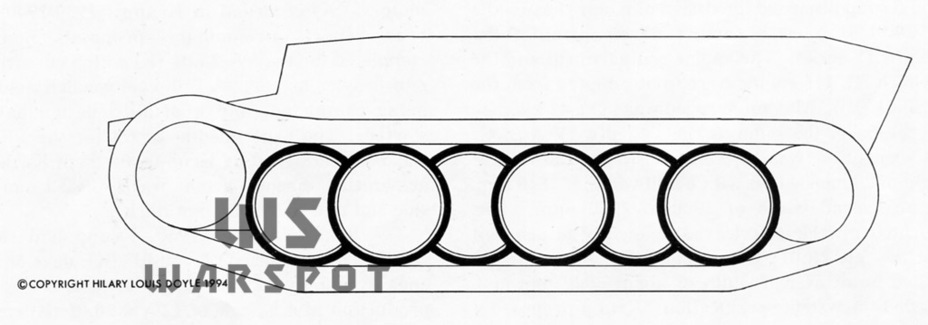
In reality, Kniepkamp was largely responsible for the death of the BW.40. Nobody touched the VK 20.01(D), and work on another tank, the VK 20.01(K) began shortly after. Unlike the BW.40, this tank had a torsion bar suspension and large diameter road wheels. A third designer, MAN, joined the race. Unlike the first two participants, Paul Wiebicke and Friedrich Reif who led the MAN design bureau fully stuck to the requirements defined by Kniepkamp, although even the VK 20.01(M) presented in October of 1940 had some changes compared to the initial concept. The chassis still had interleaved road wheels and a torsion bar suspension, but there was not enough room for torsion bars. The first and last road wheels received a spring suspension. There were three similar chassis in development by 1941. Krupp was building theirs with a turret that had a 50 mm KwK 38 L/42 gun, the others had turrets with 75 mm guns.
Meanwhile, the 6th Department constantly came up with new ideas regarding chassis design. Krupp suffered from this creativity most of all. By March, they were also developing the VK 23.01(K) which grew in weight to about 23 tons. Daimler-Benz never made these changes, since it was pushed aside if not snubbed altogether. However, their progress was significantly better. The first MB 809 engine was built and tested in February of 1941 and trials of the prototype VK 20.01 (D) with serial number 30009 began in March. The tank weighed 22.3 tons and reached a speed of 50 kph in trials. This was the first German tank to use a diesel engine.
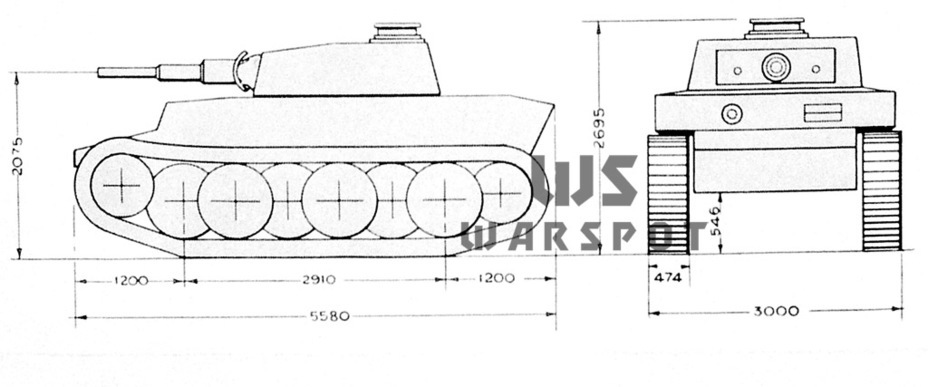
The level of confusion in the program to replace the Pz.Kpfw.III and Pz.Kpfw.IV are obvious when one examines the state of affairs in 1941. While Daimler-Benz worked on their tank, MAN and Krupp became involved with more and more projects. Krupp had three tanks by the summer: in addition to the VK 23.01(K) they were still working on the VK 20.01(K) and VK 20.02(K). MAN was working on two tanks: the VK 20.01(M) and VK 20.02(M). The VK 23.01(K) shared the running gear with the MAN tanks. The overall concept was as follows: the VK 20.01 would replace the Pz.Kpfw.III, and would likely be called Pz.Kpfw.III n.A. in production. Kniepkamp envisioned the Pz.Kpfw.III n.A. with 50 mm of armour around its perimeter. As for the VK 20.02 or Pz.Kpfw.IV n.A., it would have 40 mm of armour and a taller chassis (1800 mm as opposed to 1650 mm of the Pz.Kpfw.III n.A.). The VK 20.01(K) weighed about 21.5 tons, the VK 20.02(K) weighed 23 tons. The armament was the same as on the Pz.Kpfw.III and Pz.Kpfw.IV, but the L/60 gun was also planned for the Pz.Kpfw.III n.A. There was also the idea of installing the Waffe 0725 with a tapered barrel, although the issue of finding enough tungsten was already obvious. The tanks would also get new turrets designed by Krupp.

In theory, these would be mobile vehicles with a top speed of 50-56 kph and protection against 37 mm class guns. In reality, Daimler-Benz was the only one to build anything in metal. The fault was with constant changes to the designs, including the turret. The final straw was the appearance of Soviet tanks, specifically the KV-1 and T-34 from the 4th Tank Brigade lost during the battle for Mtsensk. On November 18th, 1941, the Tank Commission headed by the chief of the 6th Department Sebastian Fichtner inspected these knocked out tanks. It was clear that the old rectangular hulls were outdated. The T-34, both its hull and its turret, were the new subjects of imitation. The turret design visibly influenced the Pz.Kpfw.Tiger Ausf.B and the early Maus tanks.
MAN was the first to answer the revised requirements. It designed a new hull with sloped armour by November 25th. The 6th Department also increased the weight limit to 24 tons. This was the first step in the development of completely new tanks that had little to do with the VK 20.01. The 20 ton class tanks were cancelled in December of 1941.
Battle of titans
In addition to Fichtner, the delegation visiting Mtsensk included Porsche, Kniepkamp, Aders, Wunderlich (a leading turret designer at Daimler-Benz) and a number of other key figures in German tank building. The commission's conclusions were unsettling. Not just the Pz.Kpfw.III and Pz.Kpfw.IV were obsolete compared to the T-34 and KV-1, but so was every design on the drawing boards. It was no surprise that the command to make radical improvements was given. The jump to the 24 ton weight class was just the first step, by mid-December it was clear that the bar had to be raised to 30 tons. Fichtner opposed this decision, as an increase in mass meant the development of new tanks and more lost time. A 30 ton tank would also be too heavy for pontoons and the heavier the tank, the fewer of them could be built.
This time, Reich Minister of Armament and Ammunition Todt took the side of proponents of the weight increase. Krupp dropped out of the contest in the meantime, and Daimler-Benz and MAN had to join forces.
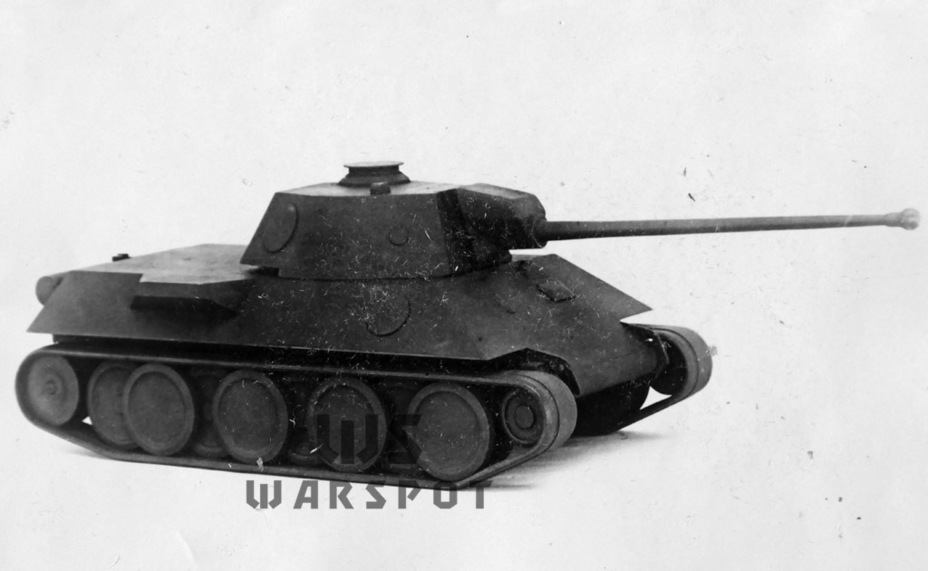
Initially, the mass was limited to 32.5 tons, but this grew to 36 in January of 1942. This tank, the VK 30.02, became a contentious issue between MAN and Daimler-Benz. MAN worked jointly with the 6th Department, while Daimler-Benz played the part of the cat that walks alone. As a result, the VK 30.02 turned out to be similar to the T-34. The transmission was in the back and the turret shifted forward. The Daimler-Benz MB 507 diesel engine, initially designed for light torpedo boats, would be used. The Henschel L 600 C turning mechanism from the VK 36.01 was used as well as a leaf spring suspension. A 75 mm gun developed by Rheinmetall-Borsig was proposed. Initially it had a length of 60 calibers, but by February of 1942 it grew to 70 calibers. A Rheinmetall turret initially designed for the VK 45.01(H) heavy tank was also proposed.
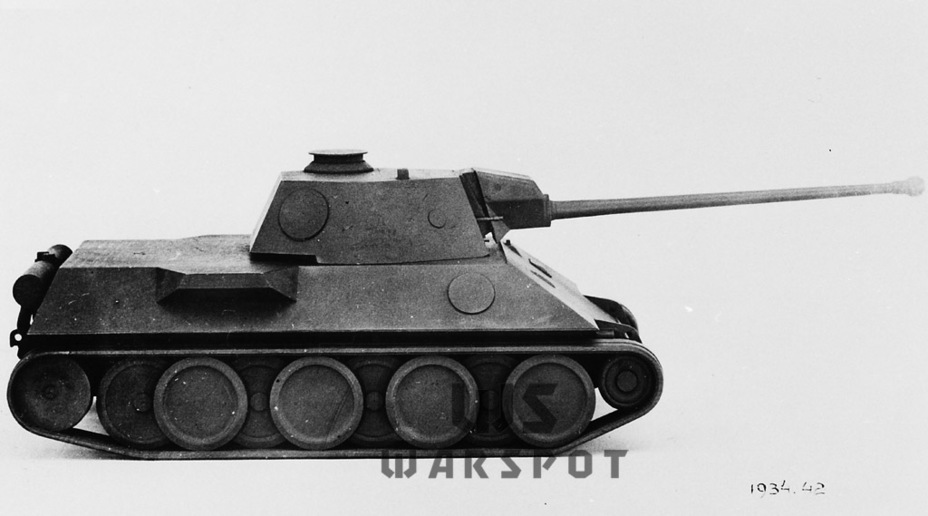
Paul Wiebicke, the head of tank development at MAN, opposed Daimler-Benz's ideas. He had two powerful allies: Kniepkamp and Fichtner. The head of the 6th Department didn't like the layout or suspension of the VK 30.02. This disagreement became so heated at a meeting held in late January of 1942 that Todt agreed to split the project. The chief designers at Daimler-Benz, Wilhelm Kissel, agreed. He expected the fact that Hitler approved the model of the VK 30.02 shown on January 22nd, 1942, to mean a victory. The situation could very well be interpreted as such. According to plans, Daimler-Benz would build 5 tanks by the summer of 1942, one with a MB 507 diesel, one with a MB 503 gasoline engine, and the rest with Maybach HL 210 gasoline engines. Overall, Hitler was swayed in favour of the Daimler-Benz project. As further development showed, Kissel celebrated prematurely.
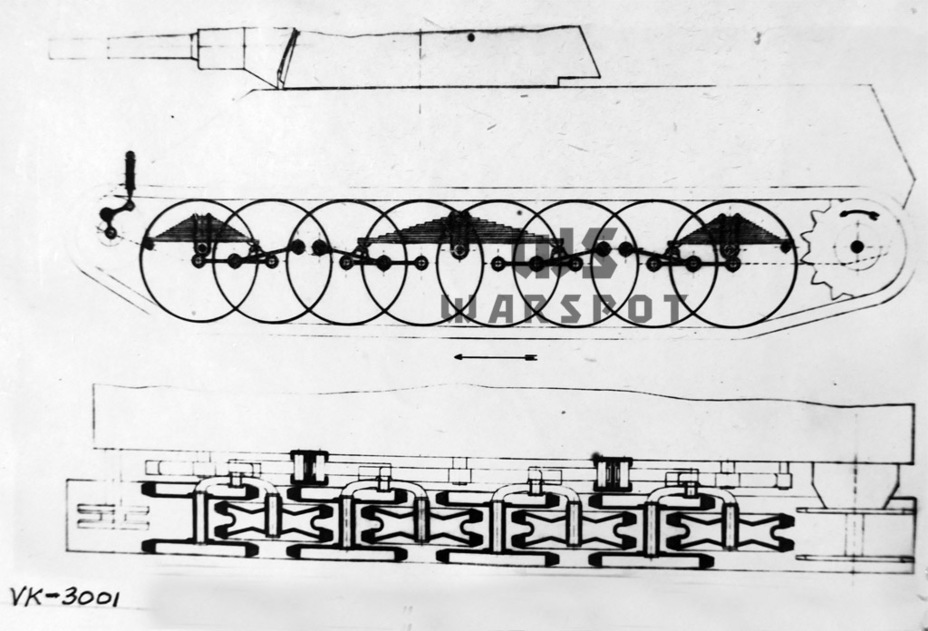
MAN expected this turn of events. A draft of a new tank was presented by Wiebicke and Reif at a meeting with the 6th Department on February 3rd, 1942. Unlike Daimler-Benz's tank, this project was done according to suggestions from above. The transmission and drive sprockets were in the front, the suspension used torsion bars. The VK 30.02 (MAN) was somewhat shorter due to a front transmission. The turret was also closer to the center of mass, which allowed hatches to be installed on the roof of the driver's compartment.
The turret deserves a separate mention. Initially, it was supposed to be developed by Rheinmetall. This did not prevent MAN from presenting their own turret variant by late January, but it was vetoed. MAN was only responsible for the chassis. As for Daimler-Benz, they went their own way by the spring of 1942 and developed their own turret as well. Instead of a universal Rheinmetall turret, they built their own turret with an L/70 Rheinmetall gun.
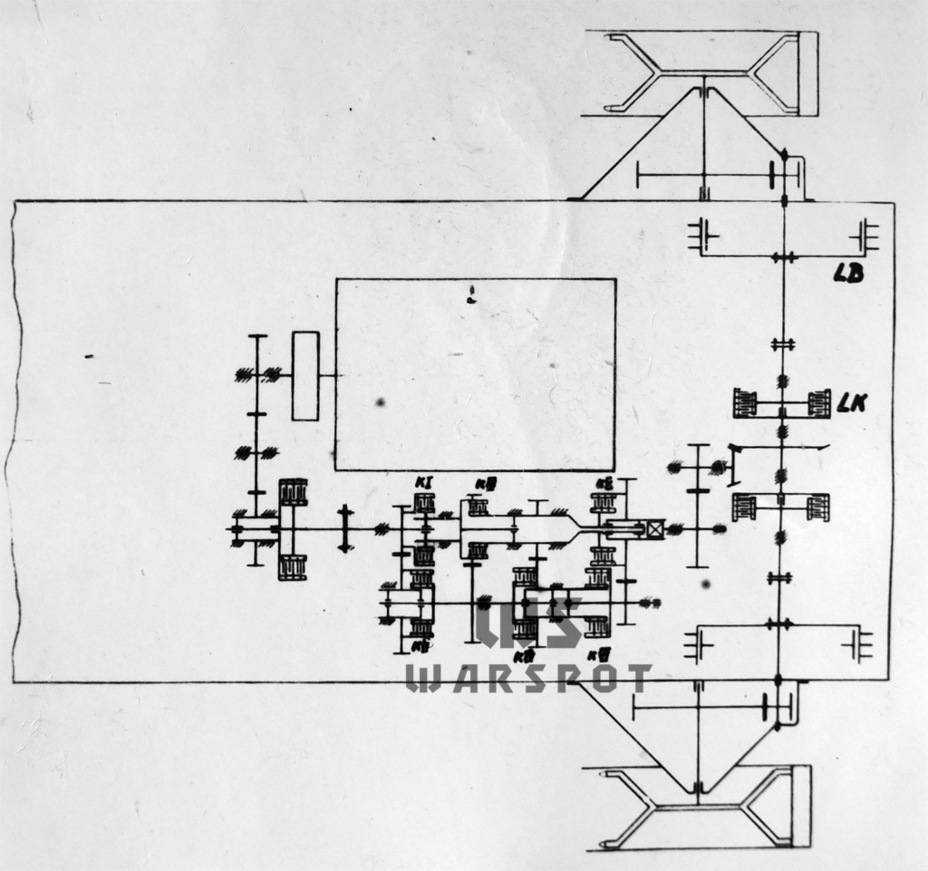
Characteristics for the competing projects were finished by March 2nd, 1942. The Daimler-Benz project was named Panther VK 30.02(D) and the MAN project was named Panther VK 30.02(MAN). Both had a weight limit of 35 tons, with the expected to speed of 55 kph from the VK 30.02(MAN) and 57 kph from the VK 30.02(D). The tanks had impressive armour for their time. The lower front plate was 60 mm thick and placed at an angle of 50 degrees from horizontal. The upper front plate was thinner (40 mm), but installed at an angle of 35 degrees from horizontal. The front of the turret was 80 mm thick, enough to resist Soviet 76 mm guns.
Hitler was still on the side of Daimler-Benz in early March and insisted on a pilot batch of 200 tanks. The situation changed by March. Todt died in an airplane crash on February 8th, 1942, and Speer took his place. This significantly changed the balance of power between the 6th Department and their opponents. A special commission was formed to select the better design headed by Wolfgang Thomale and Robert von Eberan-Eberhorst.
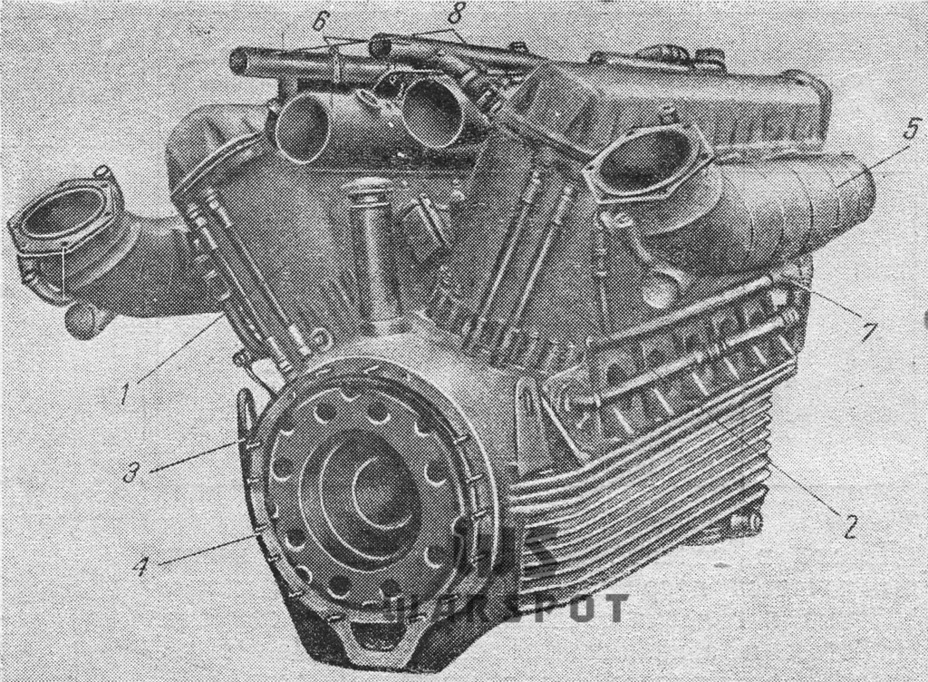
Discussion of Daimler-Benz and MAN projects continued from May 1st to May 7th, 1942. The comparison was based on several aspects: military reasoning, technical reasoning, and reasoning from a production point of view. Interestingly enough, the Daimler-Benz project was referred to by another name: VK 30.01(D). This gave birth to the myth that they developed two tanks, but this was not the case. It's possible that the different name was used for disambiguation.
The plan was to build a new batch of medium tanks destined to replace the Pz.Kpfw.III in December of 1942. A large batch was awaited in early 1943, and by mid-1943 the Panther would be a common tank in the army. The requirements were changed radically, and not in favour of the VK 30.01(D).
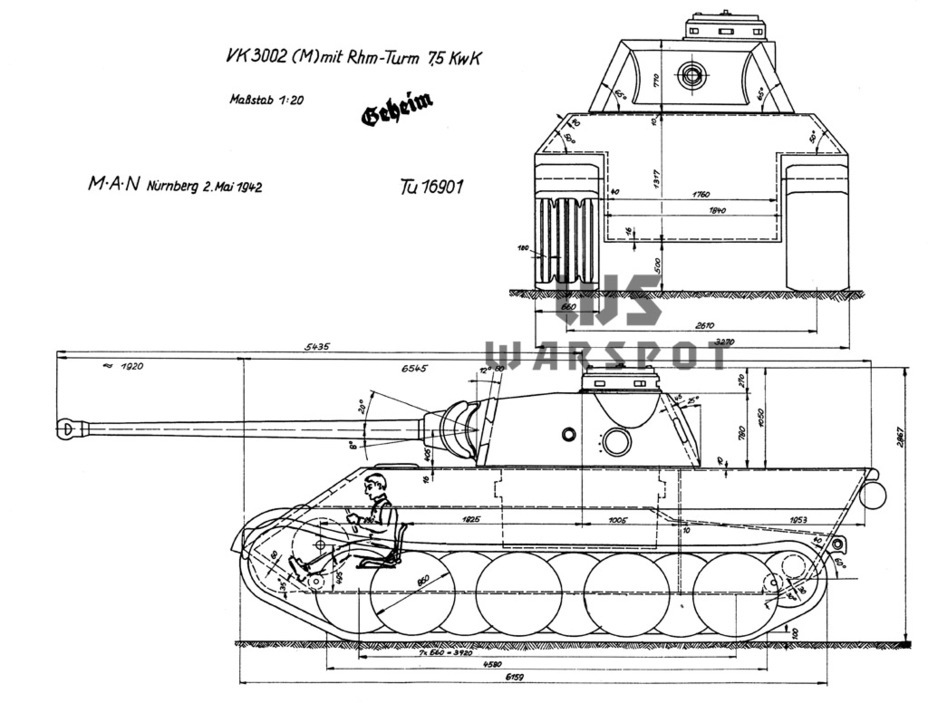
The military reasoning component included a number of criteria for evaluation. Both tanks at that point were expected to use the Maybach HL 230 700 hp engine. Neither tank met the requirement for a 22 hp/ton power to weight ratio, but both had the required speed of at least 40 kph. The VK 30.01(D) did not meet the requirement for minimum speed of 4 kph. The Daimler-Benz tank could also carry less fuel than the VK 30.02(MAN): 550 L vs 750 L. The idea to develop a new turret was also not appreciated by the commission. There were complaints about the location of the optical devices and coaxial machine gun. The turret ring was 50 mm narrower than on the Rheinmetall turret, which made it incompatible. As a result, the Daimler-Benz design bureau fooled themselves and created a problem out of nothing. Designing a new turret would take 3-4 months, which made it senseless to keep working on it, especially since the gun would also need to be altered.
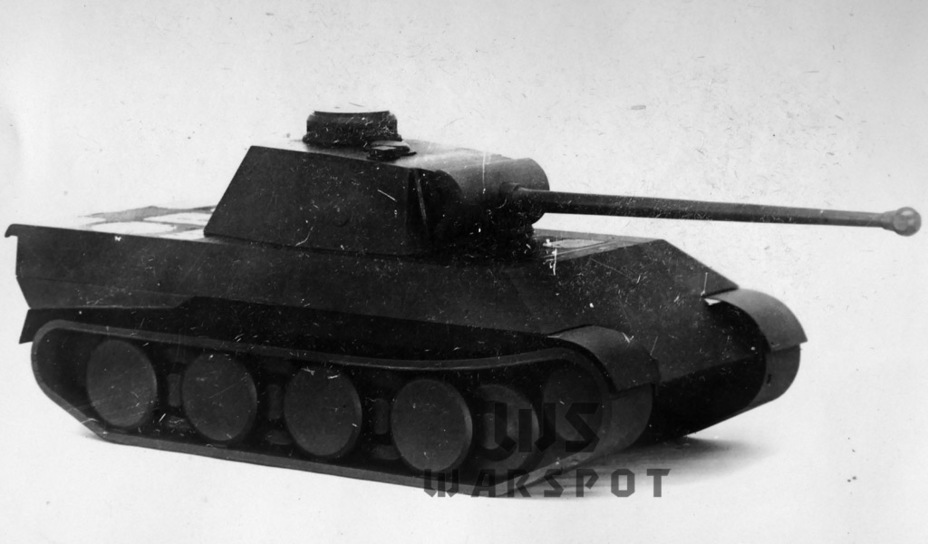
The commission didn't make a decisive conclusion regarding the rear transmission, although both the front and rear locations had their ups and downs. The VK 30.01(D) had a more comfortable workspace for the driver and hull gunner, but the VK 30.02(M) made it easier to enter the driver's compartment through the hatches in the roof. The cost of moving the transmission to the back was not just a longer hull, but also moving the turret forward. This made the tank a less stable firing platform. The suspension with a complex set of levers, reminiscent of the Leichttraktor Krupp, was also a drawback. MAN's torsion bars were better. Its ability to cross water hazards was also higher. Daimler-Benz's tank was clearly losing from a military point of view.
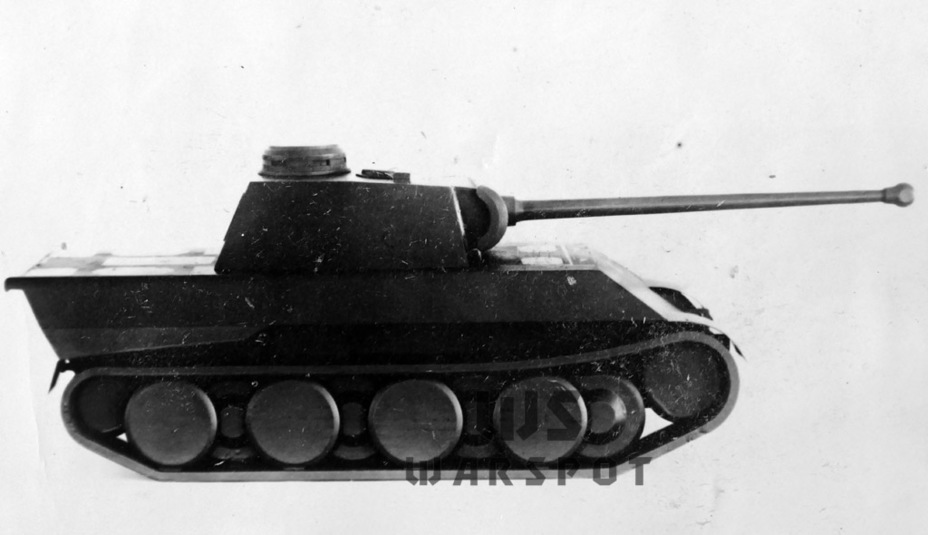
MAN's victory was also obvious from the point of view of technical service. Even though the idea with the transmission in the front made it harder to get to, MAN included a large hatch for its removal that allowed it to be extracted without taking off the turret. Replacing and servicing the double torsion bars in the field was considered problematic, especially since the army had no experience with them. The VK 30.02(D) also had some complaints. For instance, every wheel on one side had to be taken off to remove the middle spring, so there was no advantage.
The technical evaluation of the Daimler-Benz design was also negative. The Daimler-Benz gearbox in the rear caused a complication of the design, especially the addition of a cylindrical final drive. The gearbox was very large and did not inspire trust. The VK 30.02 (MAN) and its three-shaft ZF AK 7/200 gearbox seemed preferable. The leaf spring suspension was criticized again, as the hull had to be 100 mm narrower to fit it. The ground pressure was also significantly higher: by 0.15 kg/sq.cm. Finally, the VK 30.02(MAN) was superior from a production point of view. It took 351.5 hours to build a hull at Daimler-Benz and 327 to build a hull at MAN. The cost of the MAN suspension was higher, but there were so many complaints about the leaf spring suspension that this was not an obstacle.
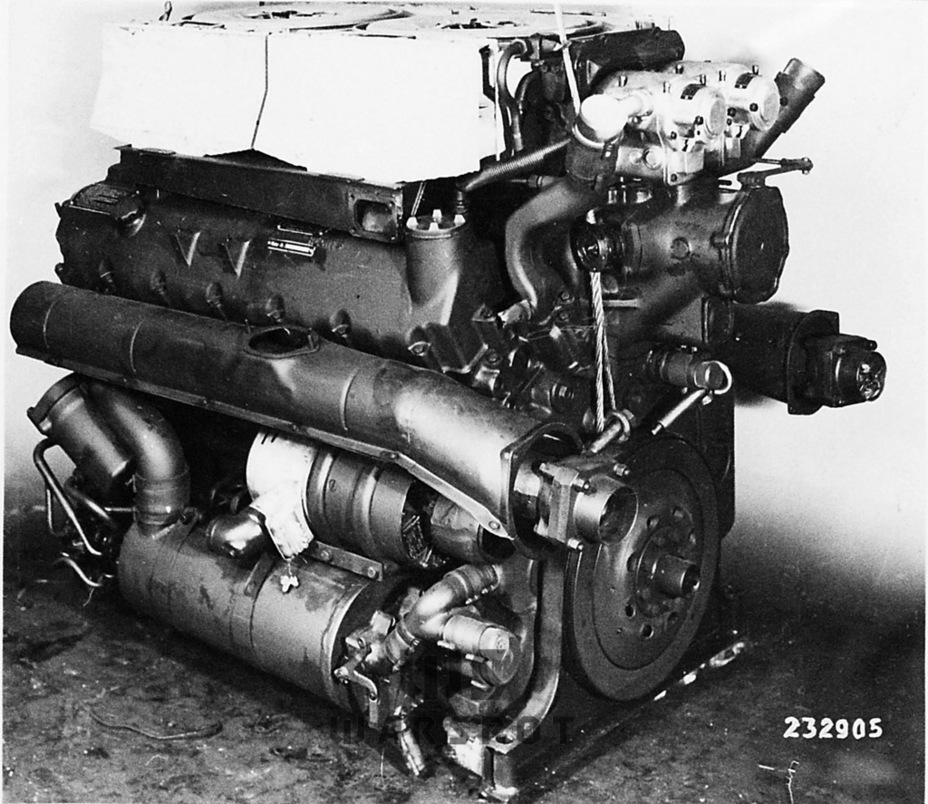
The result was expected. On May 11th the commission declared the VK 30.02(MAN) the undisputed victor. There are other theories about the reason for this, ranging from the visual similarity of the VK 30.01(D) to the T-34 to a conspiracy against Daimler-Benz. The reality is much simpler. The tank was obviously inferior to its competitor. The cherry on the cake was the turret which would still have to be redesigned. Daimler-Benz had no one to blame but itself.
Speer gave the order to stop development of the Daimler-Benz tank on March 20th. Only one chassis was ever built, used as a test lab. As for the MB 507 engine, it was cancelled, allegedly because it could not be built in large enough numbers. The real reason was the Maybach lobby and not the exclusivity of diesel fuel to the navy, as some claim. The German army had plenty of diesel engines. German industry built over 150,000 diesel powered trucks. The Germans also had a captured V-2 engine that put out 600 hp during trials. The decision to forego a domestic diesel engine was a mistake, as the Maybach HL 230 turned out to be full of faults that were never fully resolved. This became clear only later, but Maybach celebrated in the spring-summer of 1942.
A chassis with reserves
The first improvement to the tanks' armour was made by May of 1942, before the review by the commission. The upper front plate of both tanks was thickened to 60 mm and the lower plate was sloped to 35 degrees. The mass remained at 35 tons, according to requirements. The first doubts that 60 mm would be enough were voiced in mid-May. The thickness increased once again to 80 mm. This was just the start. Hitler stated that it would be better if the armour was even thicker, at 100 mm. The front of the turret was later thickened to this level.
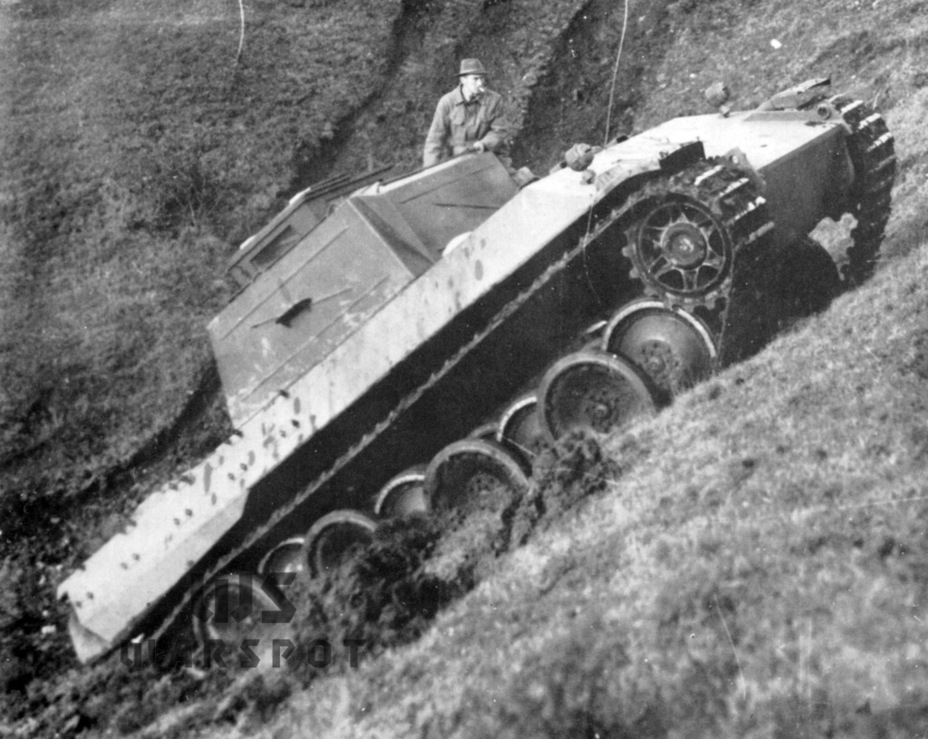
Production was being set up in parallel with work on the armour. Daimler-Benz did not lose everything. Even though its tank was not selected, it Werk 40 factory in Berlin received a contract for the new tank. Henschel would be another manufacturer of the Pz.Kpfw.III's replacement. The issue of how to produce the Tiger was being resolved in the summer of 1942, but the Pz.Kpfw.III was the factory's main product. MNH was the fourth factory at which the VK 30.02 (Panther) would be built. Only one thing remained: production and trials of the prototype.
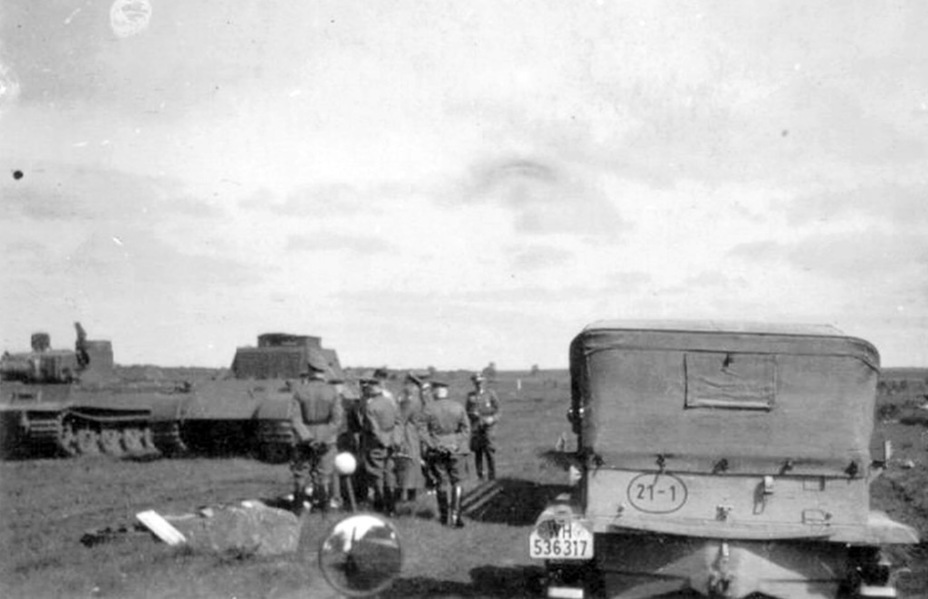
Initial plans called for production of the VK 30.02 (MAN) prototypes to be built in August of 1942. As it often happens, the plans were corrected. The first VK 30.02 (MAN) aka Versuchs-Panther (experimental Panther) was built in September. Rheinmetall did not build their turret in time and the tank was tested with a dummy. The chassis was largely the same as the tank approved in May of 1942, although the prototype already lost the muffler. The MAN design bureau kept the muffler on blueprints until December of 1942.
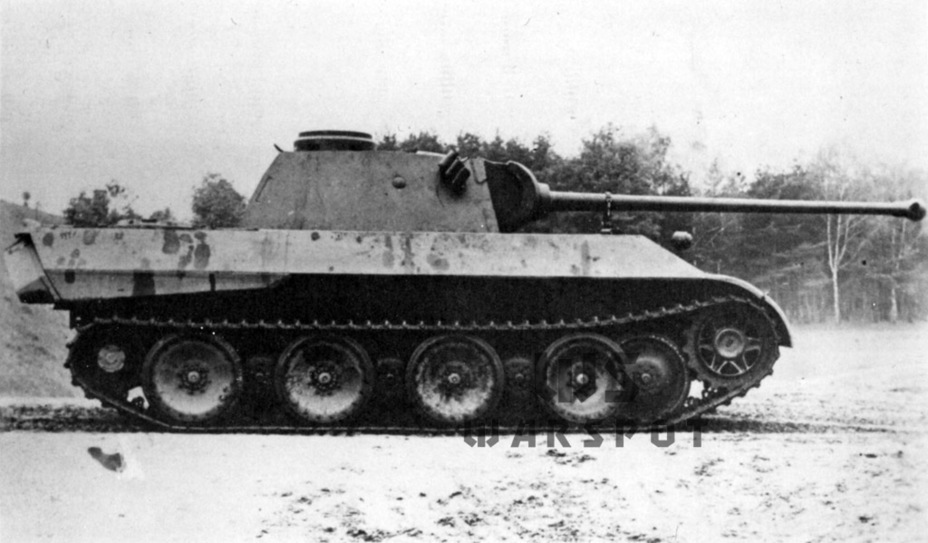
The second fully fledged Versuchs-Panther was built a month later. The chassis was exactly the same as the first vehicle, with the exception of new toolboxes in the rear. The most important change was the addition of a turret. This was a further development of the turret initially meant for the VK 45.01. Of course, it was changed for installation into a medium tank. Nevertheless, the hexagonal shape that widens towards the rear and the gun mantlet remained.
The resulting turret was the same height, but slightly longer and, more importantly, wider. The turret was initially too cramped. Since the rear plate was wide and flat, the evacuation hatch that used to be on the right side was moved there. An extractor fan and a cap for it were added to the roof. The hexagonal shape remained, but the side faces were stretched back, which increased the size. The commander's cupola was moved as far to the left as possible, even though a bulge had to be added for it. Note that the experimental turret was taller and wider than the one shown on sketches of the VK 30.02.
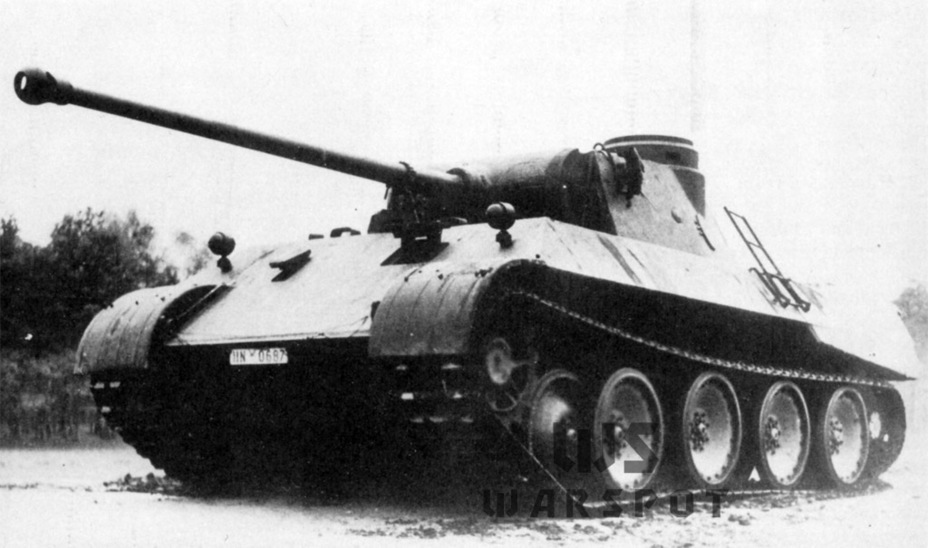
Of course, the turret also had armament. The experimental turret used the experimental 75 mm KwK L/70 gun (serial number RV1). This was likely the only example of this gun being equipped with a single baffle muzzle brake like the one used on the 7.5 cm KwK 40 L/43. A binocular TZF.12 sight was used. The turret also had two arrays of 3 smoke bomb launchers, one per side of the turret.

A number of important characteristics of the Versuchs-Panther V2 have been lost. This applies to one important aspect: the mass. There are doubts that the prototype had a mass of 35 tons. Even though the production tank had more armour and a number of changes, they would not have resulted in a 10 ton increase. It's likely that the V2 prototype was 2-3 tons heavier than planned.
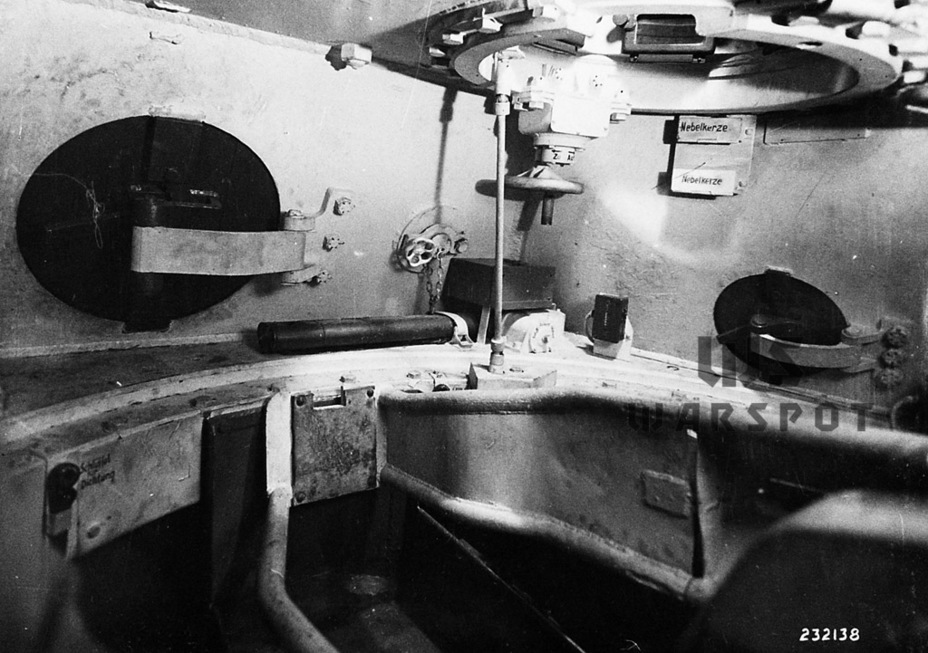
The prototypes were sent to mobility trials right after the second one was built. The biggest test was the trials held from November 8th to 14th at Bad Berka, where a training center and proving grounds were located. This was a very large display of vehicles. In addition to the two VK 30.02 (MAN) the VK 30.01(D) was delivered, as well as the experimental VK 36.01 heavy tank, ZW.40 and ZW.41 medium tanks, two VK 45.02(P) and two VK 45.01(H). Fichtner, Thomale, Porsche, Speer, and other representatives of the 6th Department and the Tank Commission also arrived. As trials showed, the MAN tanks were superior when it came to mobility and agility. As for the VK 30.01(D) it broke down on the first day of the trials and did not rejoin them.
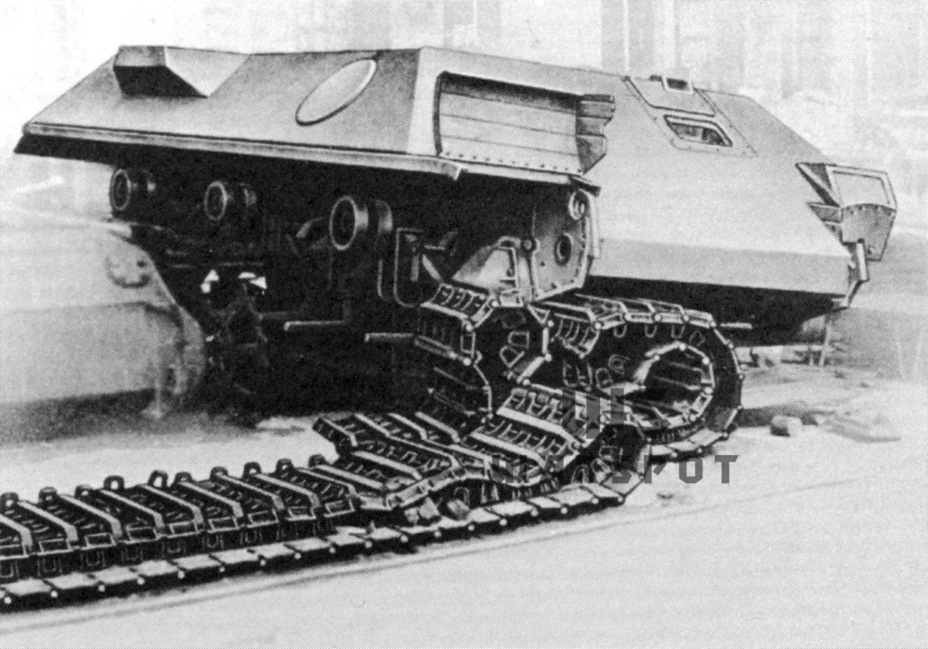
By the time the trials ended it was clear that the VK 30.02 (MAN) would to into production in an altered form. The requirements to improve the armour did not disappear, and there were still many issues to resolve that were discovered during trials (both in the chassis, the turret, and its armament). Both prototypes remained in service as test labs for various technical novelties.
Translated by Peter Samsonov. Read more interesting tank articles on his blog Tank Archives.
Sources:
- BAMA (Bundesarchiv);
- NARA;
- Panzer Tracts No.3-5 Panzerkampfwagen III U mbau Conversions to Z.W.40, Pz.Kpfw.III (T), Pz.Kpfw.III (Funk), Pz.Kpfw.III (Fl), Pz.Beob.Wg.III, SK 1, Brueckenmaterialtraeger, and Munitionspanzer, Thomas L. Jentz, Hilary Louis Doyle, 2011;
- Panzer Tracts No.5-1 Panzerkampfwagen «Panther» Ausfuehrung D with Versuchs-Serie Panther, Fgst.Nr.V2, Thomas L. Jentz, Hilary Louis Doyle, 2003, ISBN 0-970847-8-1;
- Panzer Tracts No. 20-1 – Paper Panzers, Thomas L. Jentz, Hilary L. Doyle, Panzer Tracts, 2001;
- Germanys Panther Tank: The Quest for Combat Supremacy, Thomas L. Jentz, Hilary L. Doyle, Schiffer Publishing, 1995 ISBN 0-88740-812-5.






